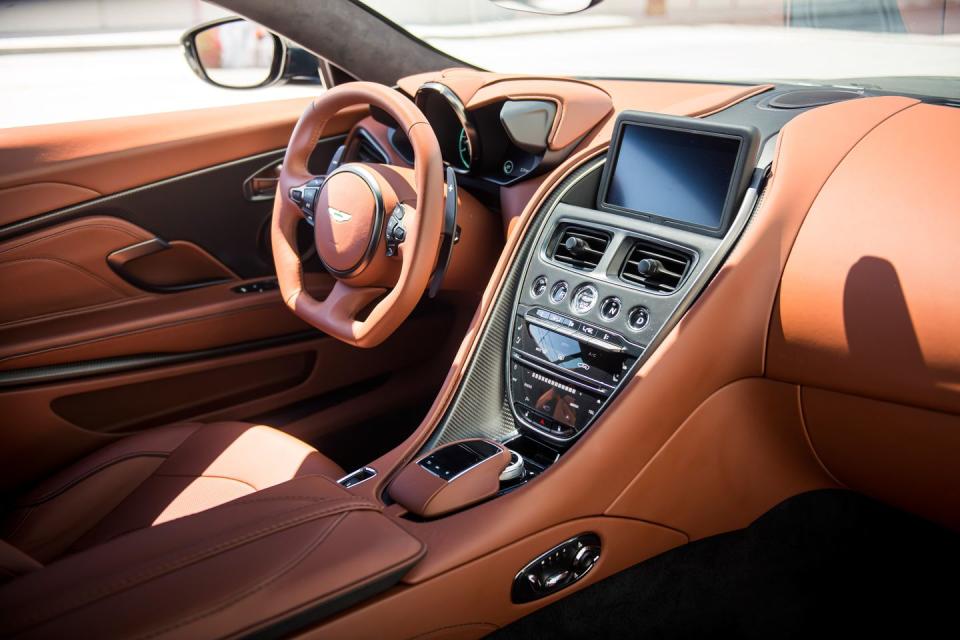2020 Aston Martin DBS Superleggera Is a Graceful Rocket

An Aston Martin can't be vulgar. It needs to exude sophistication and tasteful restraint even when it has a 715-hp twin-turbo 5.2-liter V-12 under its hood. An Aston needs to be finely tailored in appearance and seductively composed in its manners, to attract attention without shouting. These aren't cars that tell the world their owners have arrived. They're a reward for doing the hard work of running the world.
The 2020 Aston Martin DBS Superleggera, whether it's the coupe driven here or the DBS Volante convertible, pulls off all of those tricks with grace and ease.
Aston is a small company that isn't backstopped by some corporate behemoth. It makes do with the assets and heritage it has on hand—plus a few bits that it buys from Mercedes-AMG. The bonded-aluminum structure of the DBS is shared with the DB11, which lends the two models the same basic shape. It's the details—and the thundering punch of the DBS's tweaked V-12—that separate the two.

Carbon-fiber bodywork, including the front splitter and the rear spoiler, knocks some pounds off the DBS's curb weight compared to the DB11's V-12 AMR model. The lightweight weave also coexists alongside a cow's worth—maybe a cow and a half—of leather in the interior. A carbon-fiber roof panel is a $4545 option, but one that's required, along with the titanium exhaust, to achieve the company's claimed 159-pound weight reduction figure.
Press a button on the DBS's dash, and its starter motor spins the V-12 with a turbine-like whirr. The engine bursts to life and settles into a purr. Resonators in the exhaust change the pitch of its voice depending on the drive mode (GT, Sport, and Sport+). Tap the prominent selector buttons across the car's dash to engage the standard eight-speed automatic transmission. The DBS is all very theatrical with an undertone of menace.

Get past those theatrics, though, and the driving rewards pile up quickly. The DBS's V-12 is largely shared with the 630-hp DB11 AMR, but software tweaks let it make more peak boost. The result is 715 horsepower and a constant 663 pound-feet of torque between 1800 and 5000 rpm. With such a huge amount of torque spread over such a wide range of engine speed, an owner could go years without approaching the 7000-rpm redline.
The ZF-sourced 8HP95 automatic transmission features a conventional torque converter. But it shifts so precisely, both on its own or via the metal paddles behind the DBS's steering wheel, that a dual-clutch transmission would be a needless complication. We noticed an occasionally harsh one-two upshift under part throttle conditions in the car we drove, but this transmission is otherwise brilliant. We wish a manual gearbox were an option, although Aston's recent rough-edged integration of a stick shift in its smaller Vantage model left us unimpressed.

 Yahoo Autos
Yahoo Autos 